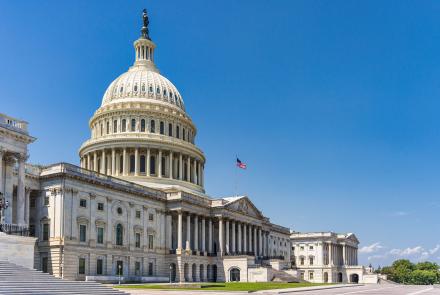
On April 10, President Obama submitted his $3.77 trillion fiscal year (FY) 2014 budget request to Congress. His plan outlines the Administration's overall fiscal policy and federal program priorities for the FY that will begin on October 1, 2013. Included in the Administration's budget are funding requests and corresponding justification data for all federal executive departments and independent agencies. To access the President's proposed budget, please click here.
In part, the proposal seeks to replace sequestration with a mix of spending cuts and revenue increases that would achieve $1.8 trillion in deficit reduction over ten years, significantly more than sequestration's projected $1.2 trillion savings over this same time period. The budget request's deficit reduction package includes the savings outlined in the Administration's last offer to Speaker Boehner during the December 2012 fiscal cliff negotiations.
Of these savings, nearly $400 billion would come from mandatory health care programs, with Medicare absorbing the majority of the cuts - $371 billion over 10 years. The largest single Medicare savings proposal would net an estimated $123 billion over 10 years by aligning Medicare drug payments with Medicaid policies for low-income beneficiaries. Medicaid is largely exempt from proposed cuts, as the Administration wants to encourage states to move forward with the ACA's now optional expansion of the program. Accordingly, the budget achieves $22 billion in Medicaid savings largely by reducing payments for prescription drugs and durable medical equipment and targeting waste, fraud, and abuse. The budget also proposes to delay the ACA's Disproportionate Share (DSH) cuts by one year, from 2014 to 2015, "to better align DSH payments with expected levels of uncompensated care." This proposal would save the program $500 million next year. The remaining $8 billion in mandatory health savings would come from changes to the Federal Employees Health Benefits Program.
The budget also proposes to adopt a new inflation measure for calculating increases in Social Security benefits, the chained Consumer Price Index (CPI). The switch would occur in 2015, netting $130 billion in benefit reductions and $100 billion in new revenue through 2023. Certain populations, including beneficiaries over age 76 and individuals with disabilities who have been receiving Social Security for at least 15 years, would receive modest protections from the calculation change.
Since the Administration for Community Living (ACL) was officially formed by Secretary Sebelius in April 2012, the President's FY14 proposal includes ACL's inaugural budget request. While FY12 funding levels for many Older Americans Act (OAA) programs are maintained in the FY14 plan, the Adult Protective Services Demonstration Program would see first-time discretionary funding of $8 million, while the Senior Community Employment Program (SCSEP) would face a nearly $70 million cut. As in prior years, ADvancing States conducted a preliminary analysis of the President's budget request with a focus on agency-specific initiatives of particular interest to the aging and disability communities.
As a result of the unusual sequestration and appropriations processes for FY13, full-year appropriations were not enacted at the time the President's FY14 budget was prepared, and the final funding levels for 2013 have yet to be released. Therefore, the President's FY14 budget request includes estimates for 2013 funding based on amounts provided by the Continuing Appropriations Resolution, 2013, PL 112-175. Additionally, as mentioned above, the President's FY14 request would cancel sequestration. As a result of these anomalies, the FY13 numbers included the Administration's budget request – and then cited in ADvancing States' analysis - do not reflect the currently enacted funding levels for FY13 that include the across-the-board (ATB) cuts required by sequestration, as well as two separate rescissions. These reductions will result in lower FY13 funding levels compared to FY12.
Please note that we will update this document as additional information becomes available, particularly with respect to funding levels in 2013.
ADvancing States' Draft Analysis of the President's FY14 Budget Request

